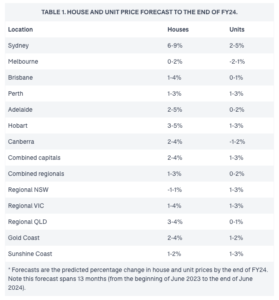The Reserve Bank of Australia (RBA) gave homeowners a welcome reprieve at it’s July 23 monetary policy meeting by leaving the cash rate unchanged at 4.10%. The decision marks only the second time in the past 14 meetings there’s been a pause – with April 2022 as the only other exception.
Like then, the decision to hold rates in July was to give the central bank more time to assess the state of the economy. “Interest rates have been increased by 4 percentage points since May last year,” RBA governor Dr Philip Lowe said in a statement accompanying July’s decision. “The higher interest rates are working to establish a more sustainable balance between supply and demand in the economy and will continue to do so. In light of this and the uncertainty surrounding the economic outlook, the Board decided to hold interest rates steady this month.”
However, Dr Lowe warned that the reprieve may only be temporary. “Some further tightening of monetary policy may be required to ensure that inflation returns to target in a reasonable timeframe, but that will depend upon how the economy and inflation evolve,” he said. “The board remains resolute in its determination to return inflation to target and will do what is necessary to achieve that.”
How much higher could interest rates go?
The country’s official interest rate has been lifted by 400 basis points since May last year as the RBA acts to dampen inflation. And by all accounts it’s working, with the most recent Australian Bureau of Statistics (ABS) monthly consumer price index showing annual inflation moderated to 5.6% in May from 6.8% in April. But while that’s its lowest reading since April 2022, it’s still well above the RBA’s target range of 2-3%.
As such, many economists suspect a few more rate rises are still lurking on the horizon, with the major banks all recently revising their baseline cash rate forecasts upward:
- NAB predicts a peak of 4.60% by August
- ANZ predicts a peak of 4.60% by August
- Westpac predicts a peak of 4.60% by August
- CBA predicts a peak of 4.35% by August
Why interest rates could still rise
The central bank doesn’t want high inflation to become entrenched in the economy. “High inflation is corrosive and damages our economy. It erodes the value of money and savings, puts pressure on household budgets, makes it harder for businesses to plan and distorts investment. It makes us all poorer and hurts people on low incomes the most,” Dr Lowe said at the recent Morgan Stanley 5th Australia Summit in Sydney.
One of the RBA’s biggest worries is that high inflation becomes self-perpetuating. This is when consumers’ expectations of price increases lead to a wage-price spiral in which they demand pay rises to preserve their incomes. Businesses then, in turn, increase their prices to maintain their profit margins, leading to more wage demands and so on. Recent ABS data shows annual wage growth was 3.7% during the March quarter. While this is still consistent with the RBA’s inflation target, productivity growth needs to improve.
Adding to the RBA’s concerns is the tight labour market with the country’s unemployment rate falling to 3.6% in May while job vacancies are at historically high levels.
Then there’s the resurgent property market. This has seen sustained gains in recent months with CoreLogic’s home value index rising 1.1% in June following a 1.2% lift in May. While the RBA doesn’t target asset prices, it may be concerned that the wealthier homeowners feel, the more likely they are to spend – once again exacerbating inflation. Double-digit rent increases in many of Australia’s rental markets won’t be helping matters either.
The outlook for Australia’s property markets
Higher interest rates reduce homebuyers’ borrowing capacity, dampening demand. That said, the outlook for Australia’s property markets remains largely positive, despite the high-interest rate environment with Domain recently forecasting a steady recovery over the next 12 months – see table below.

Driving the recovery will be strong population growth coupled with low housing supply.